
The Warsaw Uprising was a major World War II operation by the Polish underground resistance to liberate Warsaw from German occupation. It occurred in the summer of 1944, and it was led by the Polish resistance Home Army. The uprising was timed to coincide with the retreat of the German forces from Poland ahead of the Soviet advance. While approaching the eastern suburbs of the city, the Red Army temporarily halted combat operations, enabling the Germans to regroup and defeat the Polish resistance and to destroy the city in retaliation. The Uprising was fought for 63 days with little outside support. It was the single largest military effort taken by any European resistance movement during World War II.
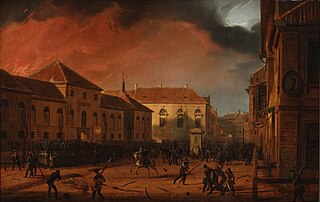
The November Uprising (1830–31), also known as the Polish–Russian War 1830–31 or the Cadet Revolution, was an armed rebellion in the heartland of partitioned Poland against the Russian Empire. The uprising began on 29 November 1830 in Warsaw when young Polish officers from the military academy of the Army of Congress Poland revolted, led by Lieutenant Piotr Wysocki. Large segments of the peoples of Lithuania, Belarus, and the Right-bank Ukraine soon joined the uprising. Although the insurgents achieved local successes, a numerically superior Imperial Russian Army under Ivan Paskevich eventually crushed the uprising. The Russian Emperor Nicholas I issued the Organic Statute in 1832, according to which henceforth Russian-occupied Poland would lose its autonomy and become an integral part of the Russian Empire. Warsaw became little more than a military garrison, and its university closed.
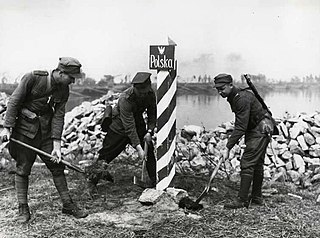
The Polish First Army was an army unit of the Polish Armed Forces in the East. It was formed in the Soviet Union in 1944, from the previously existing Polish I Corps in the Soviet Union, as part of the People's Army of Poland (LWP). The First Army fought westward, subordinated to the Soviet 1st Belorussian Front, during the offensive against Nazi Germany that led to the capture of Warsaw in January 1945, and the capture of Berlin in May 1945.

Operation Tempest was a series of uprisings conducted during World War II against occupying German forces by the Polish Home Army, the dominant force in the Polish resistance.

The Warsaw Ghetto Uprising was the 1943 act of Jewish resistance in the Warsaw Ghetto in German-occupied Poland during World War II to oppose Nazi Germany's final effort to transport the remaining ghetto population to Majdanek and Treblinka death camps.
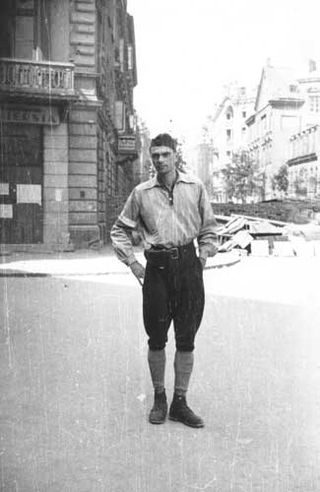
Eugeniusz Zenon Lokajski was a Polish athlete, gymnast and photographer. He is notable as the Champion of Poland in javelin throw and the creator of more than 1000 photos documenting the Warsaw Uprising.

The Polish resistance movement in World War II, with the Polish Home Army at its forefront covered both German and Soviet zones of occupation. The Polish resistance is most notable for disrupting German supply lines to the Eastern Front, providing intelligence reports to the British intelligence agencies, and for saving more Jewish lives in the Holocaust than any other Western Allied organization or government. It was a part of the Polish Underground State.

Gen. Antoni Chruściel was a Polish military officer and a general of the Polish Army. He is best known as the de facto commander of all the armed forces of the Warsaw Uprising of 1944, as well as Home Army's chief of staff.

Tadeusz Walenty Pełczyński was a Polish Army major general, intelligence officer and chief of the General Staff's Section II.

Mieczysław Jan Ireneusz Lubelski was a Polish monumental sculptor and ceramist.
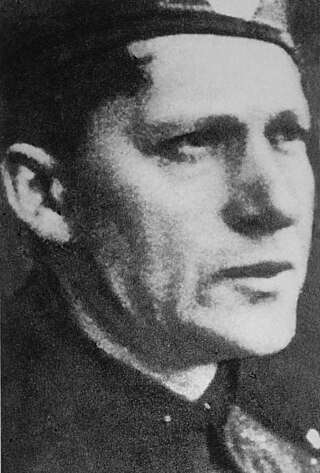
Jan Mazurkiewicz, pseudonym: "Zagłoba", "Socha", "Sęp", "Radosław" was a Polish military leader and politician, colonel of Home Army and brigadier general of the Polish People's Army. Founder of the Secret Military Organization, commander of Kedyw and the Radosław Group during Warsaw Uprising. After the war, he was a political prisoner of the Stalinist period. From 1964 he was vice-president of Society of Fighters for Freedom and Democracy.
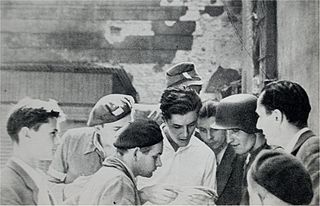
Sylwester Braun was a Polish photographer, Home Army officer. He is known as the author of photography evidencing the Nazi Occupation of Poland and the Warsaw Uprising.

Stanisław Jankowski was an SOE agent and Polish resistance fighter during World War II, and an architect thereafter, who played a prominent role in the post-war reconstruction of Warsaw.
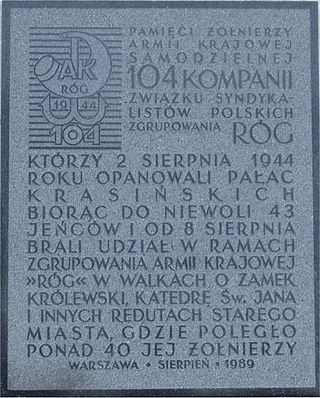
104 Company of Syndicalists was a military unit created by the Union of Polish Syndicalists, which participated in the Warsaw Uprising.

Franciszek Niepokólczycki alias Teodor, Szubert, Franek, Żejmian, Halny was a colonel of Polish Army. During World War II, commander of the Union of Retaliation, officer of the Union of Armed Struggle and the Kedyw of Home Army. President of the Freedom and Independence from 1945 to 1946 and political prisoner of the Stalinist period.

Mirosław "Stanko" Iringh - was a Polish-Slovak lieutenant and a commander of a Slovakian unit - Platoon 535, serving under the command of the Polish Home Army (AK), part of the 1st Company of the Battalion "Tur", "Kryska" Group, Mokotow region - which took part in the Warsaw Uprising, in particular in the heavy fighting in Czerniaków and in Praga.

The Chrobry II Battalion was a unit, formally subordinate to the Polish Home Army (AK), which took part in the Warsaw Uprising. It was named after the Polish king Bolesław I Chrobry.

Stefan Bałuk was a Polish general and photographer.

Józef Pszenny - Polish military commander, sapper captain of Polish Army, head of the Sapper Department of "XII-s" Warsaw District of Home Army.

Róża Maria Goździewska was a Polish nurse, known as the youngest nurse of the 1944 Warsaw Uprising when she was a child.





















